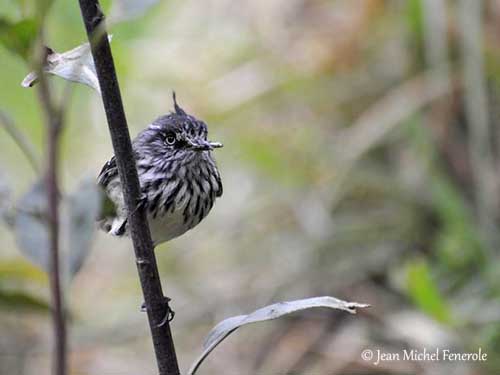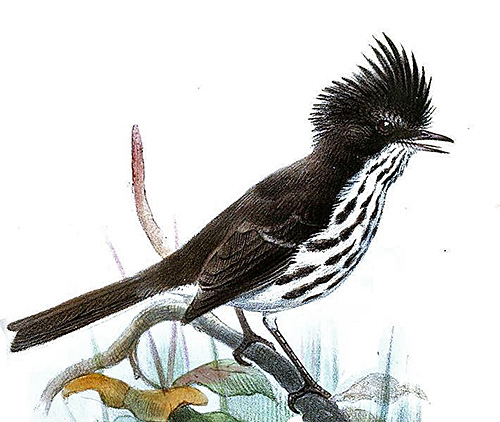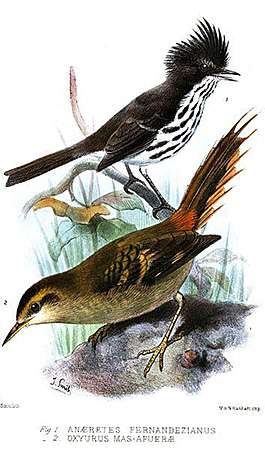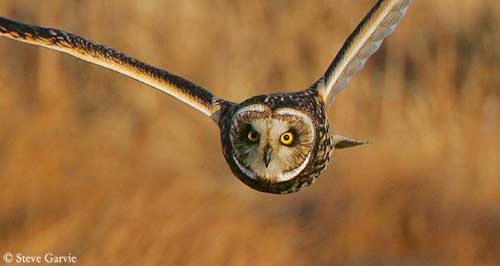
Fr: Taurillon de Juan Fernández
Ang: Juan Fernández Tit-Tyrant
All: Juan-Fernández-Tachurityrann
Esp: Cachudito de Juan Fernández
Ita: Tiranno cincia di Juan Fernandez
Nd: Juan-Fernándezmeestiran
Sd: robinsoncrusoemestyrann
Photographers:
Jean Michel Fenerole
Photos d’Oiseaux du monde
Steve Garvie
RAINBIRDER Photo galleries
Illustration:
Joseph Smit: 1836-1929
Source: https://archive.org/details/ibis13brit/page/180/mode/2up?view=theater
Text by Nicole Bouglouan
Sources:
HANDBOOK OF THE BIRDS OF THE WORLD Vol 9 - by Josep del Hoyo - Andrew Elliot - David Christie - Lynx Edicions - ISBN: 8487334695
BIRDS OF SOUTH AMERICA – Passerines - by Robert S. Ridgely and Guy Tudor – HELM Field Guides – ISBN: 9781408113424
Endemic breeding birds of Juan Fernández archipelago, Chile
First reproductive records and nest sites of the endemic Juan Fernández Tit-tyrant Anairetes fernandezianus (PHILIPPI, 1857) (Aves: Passeriformes: Tyrannidae) from Robinson Crusoe Island, Chile
Arthur Grosset's Birds (Arthur Grosset)
Wikipedia, the free encyclopaedia

Juan Fernández Tit-Tyrant
Anairetes fernandezianus
Passeriformes Order – Tyrannidae Family
INTRODUCTION:
The Juan Fernández Tit-Tyrant is endemic to Juan Fernández Islands where it is found on Robinson Crusoe Island, especially in wooded habitats. It feeds on insects and forages actively in the vegetation. It is the only insectivorous species of the island.
The Juan Fernández Tit-Tyrant frequents all forested habitat types with both introduced and native vegetation. Some nests have been observed in native laurel forest patches at lower montane level. They were placed in the dominant Myrceugenia fernandeziana, sometimes in isolated trees surrounded by open space.
The nest is a typical cup-shaped structure with mosses covering the outer part as camouflage. Male and female share some nesting duties but the female incubates alone while the male remains in the surrounding.
The Juan Fernández Tit-Tyrant is affected by predation by cats, rats and coatis, and possibly the Variable Hawk. The species is currently listed as Near Threatened.
DESCRIPTION OF THE BIRD:
Biometrics:
Length: 12,5 cm
The Juan Fernández Tit-Tyrant resembles the Tufted Tit-Tyrant, but it is larger with longer crest.
The upperparts are dark dusky grey. On the blackish wings, the wing-coverts show narrow, white tips forming two contrasting white wingbars. The secondaries show indistinct pale edges but the innermost flight-feathers show broader pale edges. The tail is dusky with whitish outer webs on outermost pairs of rectrices and tips of remaining ones.
On the underparts, head sides, chin, throat and breast are white with conspicuous black streaks. The streaking is broadest on breast and upper belly, and extends down the flanks. Lower breast, belly and undertail-coverts are creamy-white.

On the head, the crown is blackish. The central feathers are black and well elongated, forming a recurved crest overlying some whitish feathers. Forehead and lores are black. We can see a white, small supraloral patch and a thin rear supercilium.
The bill is black. The eyes are pale yellow. Legs and feet are black.
Male and female are similar.
The juvenile has rather uniform dull grey plumage, mainly on breast and belly. It lacks the adult black-and-white streaking. Crest and tail are shorter.
RANGE:
The Juan Fernández Tit-Tyrant is resident on Robinson Crusoe Island (Juan Fernández Islands, off Chile).
HABITAT:
The Juan Fernández Tit-Tyrant is mainly found within the native forest, usually in the vicinity of forest gaps.
The species is also concentred in native forest areas during the breeding season. However, the male tit-tyrant holds the same territory during the post-breeding period. These observations corroborate that these birds use the native forest as primary habitat almost all year round.
From observations, the Juan Fernández Tit-Tyrant also uses sites located close to the endemic Gunnera peltata shrub formations in moist habitats, spreading into the adjacent upland native forest. These areas are also good food sources for tit-tyrants.
CALLS AND SONGS: SOUNDS BY XENO-CANTO
The sounds given by the Juan Fernández Tit-Tyrant are poorly known, but they probably resemble those of the Tufted Tit-Tyrant.
The call is a repetitive thin “pluit-pluit” and we can also hear a softer “pee-de-dit”.
The song is high-pitched, with chatters and fast phrases “cuit-chuit-chuit-chuit-chuit-chuit-didi”.
To compare the two species
BEHAVIOUR IN THE WILD:
The Juan Fernández Tit-Tyrant is an insect-eater. It forages actively, solitary, in pairs or family groups. It performs short flights from perch to perch and sallies into the air to catch an insect. It gleans prey from vegetation, flowers and twigs by perching and hovering. It usually moves continuously among leaves and branches while searching for food.
The breeding behaviour of the Juan Fernández Tit-Tyrant is poorly known, but thanks to some observations, we can describe some details of this period.
The male tends to be territorial and aggressive, chasing rivals and intruders away from the territory. The crest feathers are usually raised during these encounters, and probably also during the courtship displays.
From some observations, the open, cup-shaped nest is often built in Myrceugenia fernandeziana, although some nests have been found in other plant species. The structure is attached to twigs and well camouflaged with mosses on the outer part.
The Juan Fernández Tit-Tyrant is monogamous. The female incubates alone while the male remains present in the vicinity of the nest.
The Juan Fernández Tit-Tyrant may become aggressive towards predators such as the Short-eared Owl. An observation describes this behaviour.
If the predator approaches the nest, especially during the absence of the female, the tit-tyrant male approaches the predator to a distance of several metres while warning intensively as it is located between the intruder and the nest. Alarmed by the first male, a second bird arrives and joins the loud aggressive warning and mobbing behaviour.
The predator flees some 50 metres away to perch again, but followed by the two tit-tyrants mobbing continuously.
The Juan Fernández Tit-Tyrant is resident on Robinson Crusoe Island.
The species performs short, active flights while foraging, but during the chases, the flight is undulating.

Juan Fernandez Tit-Tyrant
Joseph Smit : 1836-1929
REPRODUCTION OF THIS SPECIES:
The breeding season probably takes place from August to December, with active nests in November/December.
The Juan Fernández Tit-Tyrant breeds in forested habitats, especially with the dominant tree species Myrceugenia fernandeziana but also other scattered tree species.
The nest is an open, cup-shaped structure placed laterally in the side of the tree, not far away from the densely leaved tips of the exterior twigs. The nests are usually placed 1,50/2,50 metres above the ground. It is attached to the exterior parts of the twigs, about 50 cm from the tip. The structure is attached to 3-5 twigs.
The exterior of the nest is covered with mosses used as camouflage. Other materials such as grass, leaves, root fibres and spider cocoons are used too. The cup is lined inside with several fine feathers, probably mostly from the bird itself. Some other slightly larger feathers can be seen in the nest too. They are used to cover the brood when the adult leaves the nest for feeding.
The female lays 2-3 dull white eggs. She incubates alone, but the duration of the incubation is unknown. At hatching, the chicks are naked and their bodies haves purple-greyish coloration. Their eyes are closed.
The fledglings have a uniform unobvious grey coloration, especially on breast and belly. They still lack the black-and-white streaking of the adults.
They can be seen in family parties with two guiding adults.
PROTECTION / THREATS / STATUS:
The Juan Fernández Tit-Tyrant is a restricted-range species. It is threatened by predators including cats, dogs and coatis, and also the Short-eared Owl and the introduced Variable Hawk coming from Alejandro Selkirk Island.
It is also affected by habitat loss caused by introduced mammals such as cattle, pigs, goats and sheep.
The population was estimated stable and secure at 5,000 individuals in the mid-1980s. In addition, the Juan Fernández Islands are protected from 1967, and a habitat restoration programme began in 1997.
The Juan Fernández Tit-Tyrant is currently classified as Near Threatened.
